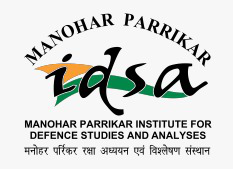The Centre tracks relations between India and the countries of North America. US and Canadian internal developments are also monitored to have a better understanding of their role as drivers of foreign and domestic policies. The large Indian diaspora in these two countries also serves as a bridge for strengthening bilateral relations.
The Centre also actively tracks and analyses trends in strategic technologies, with principal focus on critical technologies and their implications for national security. It addresses evolving threats in space security and cyber security, ensuring comprehensive research into these critical domains. The other mandate of the Centre is to undertake research on Biological and Chemical Weapons with a focus on studying the dangers of proliferation and terrorism.
No posts of Books and Monograph.
A dominant paradigm for militarised cyber operations, owing to a growing interest in such actions, is seeking an ability to strike back and launch cyber counter attacks immediately after being attacked. This commentary challenges view based on the argument that it leads to a contra-productive tit-for-tat game with no decisive or deterrent outcome. It argues that cyber attacks are information, which an initially passive targeted society can gather to refine and consolidate its cybersecurity and over time receive an advantage over the initial attacker.
The term ‘hybrid warfare’ has been used by American military experts for more than a decade already. However, until recently, there was no officially accepted definition of the term, and, thus, an ambiguity existed over its meaning. As per the analysis of recent local conflicts in the Middle East and Ukraine by the US political and military elite, hybrid warfare is a conflict where actors blend techniques, capabilities and resources to achieve their objectives.
In this commentary, I will use strategic cyberwar theory1 to explain why India has a higher level of cyber resilience than several of its potential adversaries. Even if India has challenges in its government-led cyber defence,2 there are cyber resilience benefits to be drawn from the way Indian society operates, functions and is constitutionally designed and accepted by its constituents, independently of any cyber defence efforts. First, the concept of strategic cyberwar.
India, the IT nation, did not make a news splash at CyberTech 2014. That is worth a passing thought. Because cyber is the fifth and new domain of warfare, after land, sea, air and space.
The pressing issues around cyberspace revolve around internet governance, cybersecurity and drawing up rules of the road for the new domain of cyberwar. While each of these is at a different stage in its evolution cycle, cyberspace itself is facing a watershed moment as insecurities mount. The fragmentation of cyberspace seems inevitable unless there is accelerated movement on resolving the fundamental issues of internet governance and cybersecurity that have been hanging fire for well over a decade.
Just as the world was beginning to understand the various dimensions of cyberspace in general, and internet governance in particular, it received the rude shock of the Snowden revelations about the global surveillance carried out by the United States National Security Agency (NSA) in the name of counterterrorism. All kinds of electronic communications of US citizens and non-citizens alike were monitored. Phone tapping and electronic interception were part of this huge operation to collect a haystack of data in the hope of detecting terrorist links to protect national security.
In June 2013, President Obama met with President Xi Jinping at Sunnylands, California. The meeting was seen as a chance for the two leaders to get to know each other in a relatively informal setting so they could address the growing mistrust between their countries. While maritime disputes, trade tensions and differences over how to contain the North Korean and Iranian nuclear programmes were high on the agenda, cyber security—in particular Chinese cyber espionage—was the defining issue of this unusual summit.
Paris Call could be seen as a positive step towards finding a middle path between Western democracies and authoritarian regimes on the issue of cyber governance.
One understands that long term benefits of Aadhaar actually outweighs many concerns. However, adequate norms need to be laid down from collection to retention of biometric data, in addition to formulating strong data protection and privacy laws.
Mega data breaches of user’s private digital data in the last two years has drawn the world’s attention towards protection, safe custody and management of this extremely valuable commodity.
Eradicating the fake news problem calls for a collective effort of individuals, governments, social media and content platforms, and innovative technology solutions.
The Cambridge Analytica episode highlights the need to expedite the process of developing a data protection framework and probably amend the IT Act in accordance with the changing realities of cyberspace.
The UNGGE process is the least bad option to keep open channels and maintain continued focus on securing cyberspace.
India can play an essential role in mitigating the risks and maximizing the benefits on account of rapid growth of AI enabled technologies.
The dexterity with which Japan handles this case and the follow-up measures it adopts will strongly influence other countries to either liberalise the use of cryptocurrencies or strictly forbid them in the interest of consumers, law enforcement and national security.
After decades of false starts, AI/ Robotics technologies today appear to be at an inflection point, making rapid advancements which are considered significant enough to usher in a new revolution in military affairs
Weapon development programs are successful when technological innovations are matched with national strategic goals. Further development of the Agni-5 should be based on the objectives of adding to the overall combat potential and augmenting deterrence.



